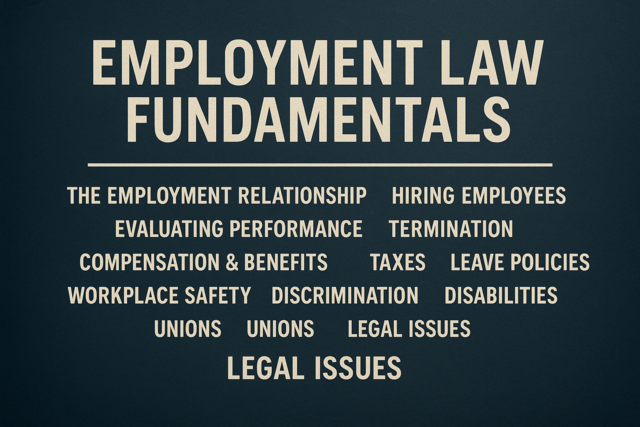Grant Writing Trends and Facts
There are always facts you really should know but unfortunately do not. Even so, you can easily keep abreast of trends. In this regard, your best friend is without doubt the Internet.
We grant writers are in a terrific place at the present time as far as being able to remain up to date. Funders have been increasingly placing an emphasis on a collaborative approach to projects for quite a while now. This usually makes it easier for grant writers to better direct and focus their efforts for their clients.
More recently the flavor of the month includes such components as the professional development side of educational programs, cultural projects, or projects in the area of system changes for problem solutions. One of my favorites would be the growing popularity of "outcomes-based work plans."
The big emphasis recently has increasingly been on sustainability plans rather than on funding startups. People see a certain wisdom in funding ongoing operations: They get to feel and see a much more satisfying result.
Once you see more than two or three requests for proposals (RFPs) asking for information in relation to a new focus or mandating a new criterion, be ready for the fact that a number of other funders will soon follow suit. A great way to utilize this fact is to see those first few new approaches as a forewarning of things to come: opportunities that you and your client organizations will be ready to grab for the benefit of all concerned if you are prepared.
The great plus for you as a working grant writer is that this type of professional approach will put you in excellent stead, establishing you as essential to your clients. Everyone knows how fast business grows when you have happy, smiling, and content clients!
You also should keep a close and constant eye on the trends and allocations to the federal departments. It is common sense to conclude that when an extra large allocation is made to a department, it is highly likely that bigger grant opportunities will be available in the following year.
To some of us, there are obvious reasons why a grant writer and his or her client would not approach certain foundations, even though some areas may seem rather gray. For example, a health project would prevent most people from approaching a tobacco company for a grant.
To others, anyone who has the funds is worth approaching. (This approach is not recommended, even though it can be rather tempting at times.)
There also are other reasons why you should not, or frankly cannot, solicit certain sources for funds. For instance, government agencies cannot be solicited for funds; instead, you need to match projects with an appropriate RFP.
The words "money is never free" are oh, so true. There are always conditions, catches, and generally things to be aware of when someone grants you money.
~ Government grants, for instance, have various requirements and certifications you need to be aware of from the very beginning. To start with, government grants obligate the winner of any such grant to maintain excellent financial records, in extensive detail.
Do not think that government agencies do not spring surprise audits; they do, and the Internal Revenue Service (IRS) does as well. So be careful and be accurate.
~ You most likely will need to be willing to attest to the fact that the site of the intended project meets the minimum requirements of the Americans with Disabilities Act, and you may be asked to sign employment nondiscrimination documents.
There are almost endless truths, or pointers, connected with philanthropy and philanthropists. Let us look at some that should prove extremely helpful to you in your grant-writing career, particularly when you first start.
� All foundations do not necessarily include the word "foundation" in their name. Some use the words "fund" or "trust." Others even call themselves "corporations"; for example, the Carnegie Corporation.
� Every foundation must file an IRS informational return (990-PF), but some nonprofits do not need to do so. Note that under current rules, nonprofits with an income of $25,000 or less are not required to file a 990, and neither are religious organizations.
� An extra good point to note: The Council for Advancement and Support of Education maintains a top-notch, up-to-date database on corporate matching gift programs. This is not all that surprising, considering more corporations match gifts to educational bodies than to any other area.
The CASE online bookstore has a fabulous wealth of information that you absolutely must check out.
The good news is that you can purchase a copy of the CASE directory, or you can be really proactive and buy copies of its brochures that list companies so that you can distribute them to your clients.
� � DANGER: If you have not noticed already, Internet searches turn up dozens of vendors claiming to be able to get things for you for a fee of between a few dollars and a few hundred dollars. The area of government grants is certainly no exception.
Take note: Anything that sounds too easy is usually a scam in the world of grant proposals, the same as it is everywhere else. At most, you receive a list of information that you could easily obtain on your own.
The National Archives is another area that is great for your philanthropic searches
Introduction
Is it all beginning to seem a bit overwhelming to you?
You need to be very firm, especially with yourself, in setting and following ground rules for the actual writing of your grant. They are a must if you and your clients are to get the very best value from the exercise.
It might not sound like much fun to set a bunch of rules even before you start writing, but it is the only way to go. Years of experience reinforce the fantastic value of that rather hackneyed saying: "Fail to plan, and you plan to fail."
A grant-writing plan will surprise you with how helpful it can be in assisting the assimilation of all the information you gather into the right plan. It will help coalesce your ideas and spotlight any omissions in your research, project descriptions, and budget.
The No. 1 Ground Rule: Actually plot out the steps required of you, your clients, and the particular grant. You should never proceed with writing at all until you have put together a step-by-step writing plan covering the when, where, and how of your proposal.
You and your client and any other relevant team members should work together to confirm the mission or purpose of the grant project; i.e., what is hoped to be achieved.
Far too many organizations function in continual crisis management mode. Unfortunately, experience has shown that nonprofit organizations are some of the worst culprits in this regard. Too many are missing that professional image; this is where you, the organization's grant writer, can truly be of assistance by taking the entity you represent to the cutting edge of grant proposal creation.
Being proactive in writing grants, and therefore in seeking grants, is crucial because it prevents everyone concerned from always operating in a reactive mode.
The appropriate laying out and following of your plan is the first step on your way to becoming truly proactive. Certainly before you spend oodles of time writing, collecting material, and mailing off copious grant applications, you must have a plan for approaching the funders. A successful grant writer will not be foolish enough to work without an extremely well-structured plan, one that aims to acquire full project funding.
Following is an all-purpose general list of the most crucial parts of a plan in the appropriate order:
1. mission statement;
2. thorough assessment of funding requirements;
3. funding goals;
4. funding objectives;
5. your action plan;
Goals never ever stand alone. A goal always needs to be supported by a purpose, benchmark, or measurable step. Benchmarks are the steps that must be taken in order for you to achieve your goals. Of course, funding objectives are different from project to project and plan to plan. A simple illustration might be:
Objective 3: Hold the sessions and have reviews done by June.
Objective 4: By the end of November, have increased awareness of the project's mission by an estimated 50 percent.
Before you set your project's funding goals, you need to do a thorough assessment of the funds needed and each assessment of funding needs can be radically different.
After you have completed the assessment of funding requirements, you will need to articulate your funding goals. This type of goal should be futuristic and describe where you ideally want to be with the project when the grant funding finishes. A very broad example might be:
Goal No. 1: Secure start-up grant to secure the first step toward the project's mission.
Goal No. 2: Locate wide range of funding sources for future project steps.
Goal No. 3: Obtain operating grant to aid in finishing the mission.
You establish these by asking yourself a few easy questions. The answers are your outcomes. You also need to ask yourself how you will calculate the changes.
What will change?
How will we know?
How do we measure the outcomes?
It is generally only with experience that you will learn how far to go when trying to tailor an impactful case for your grant proposal. You need to take risks at times, but when and how is the best way to assess what to do?
Unfortunately, sometimes it is only experience that will teach you the technique. You will no doubt need to experience a few mistakes before you become proficient, but the end result will be well worth it
After the many hundreds and thousands of grant proposals some organizational staff see, the proposals that make an impact are those that phrase things differently or surprise people. Those are the ones that really score, even with conservative organizations.
























